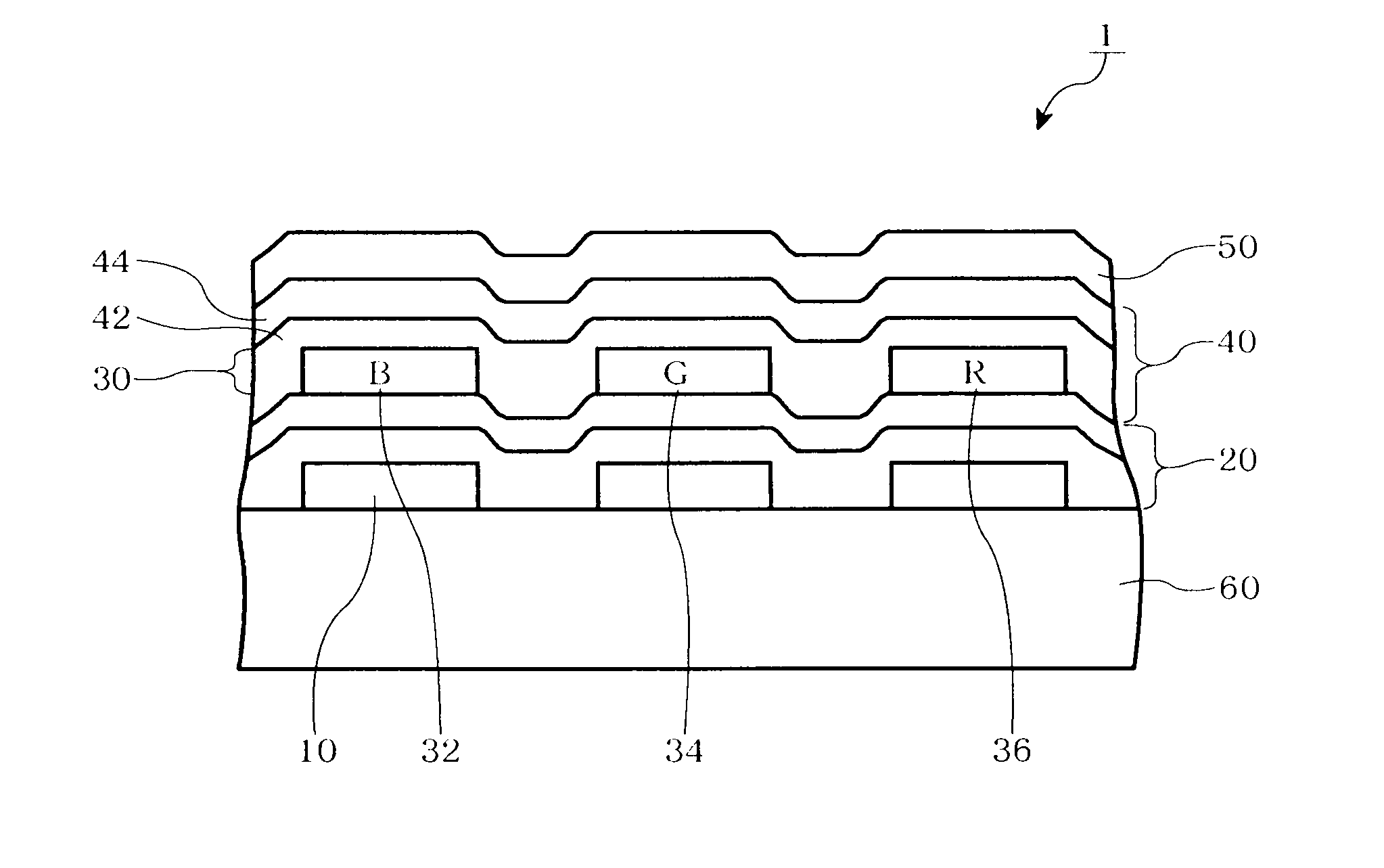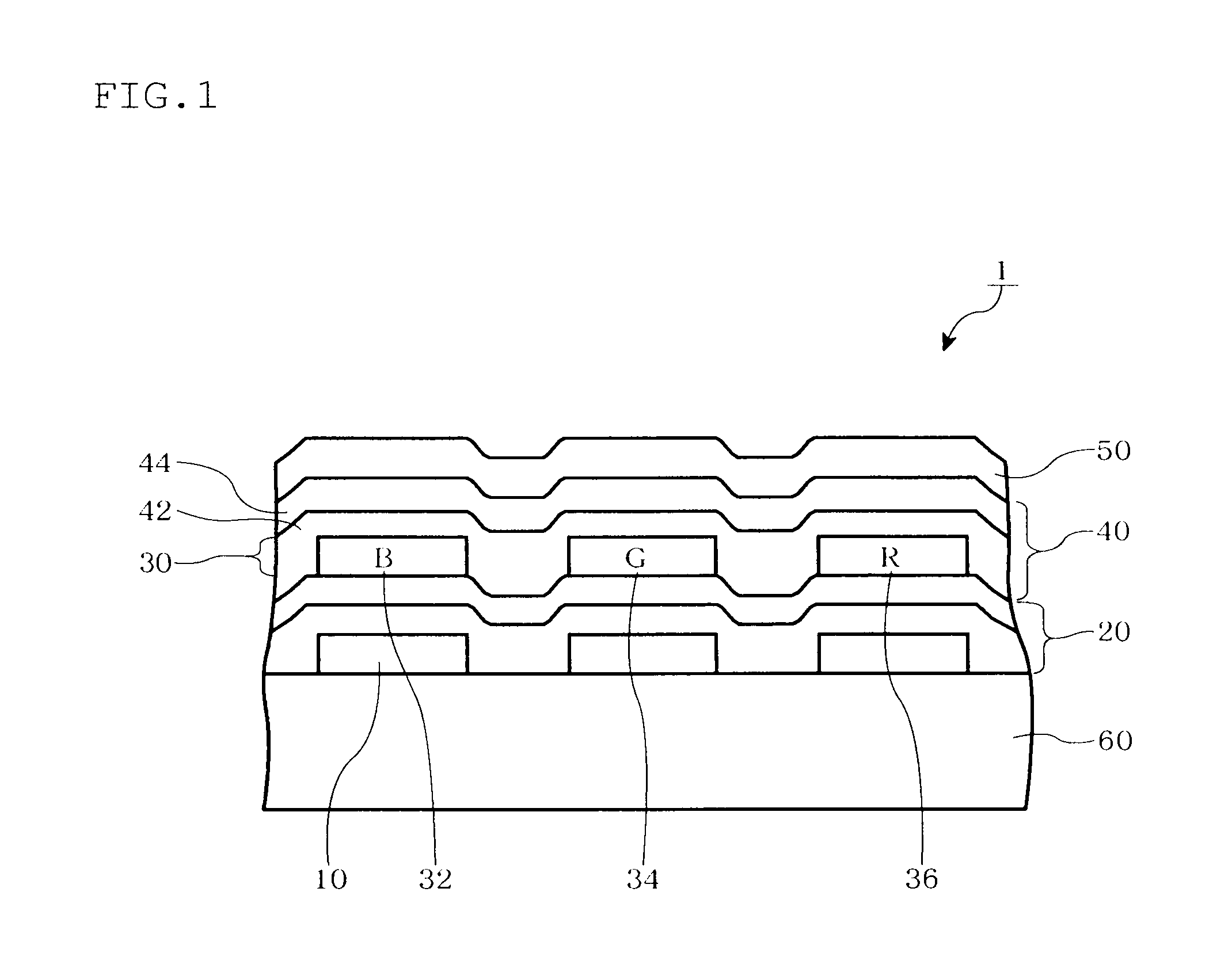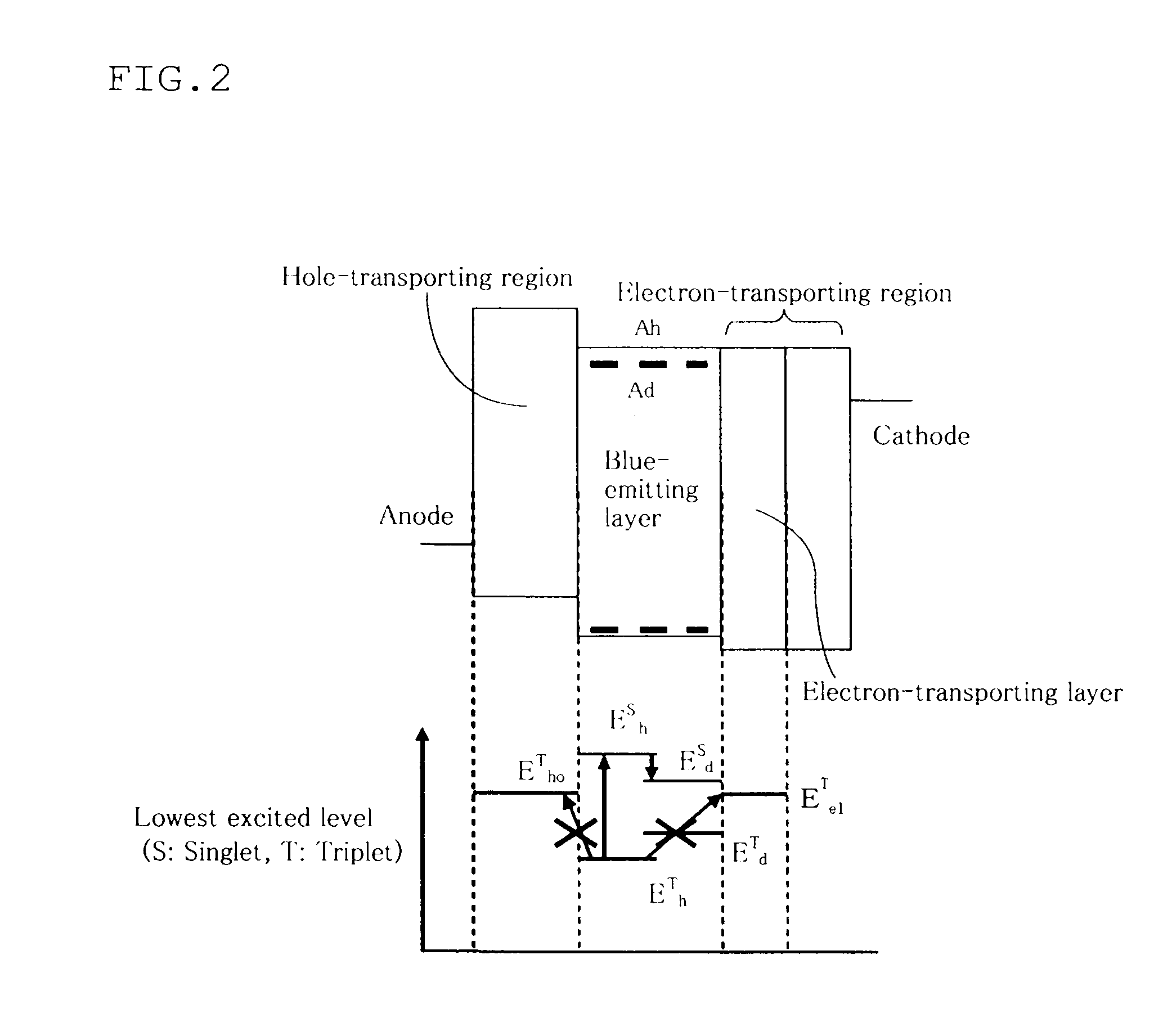Organic electroluminescence device
an electroluminescence device and organic technology, applied in the direction of thermoelectric devices, organic semiconductor devices, anthracene dyes, etc., can solve problems such as efficiency improvement, achieve excellent phosphorescent devices, prevent luminous efficiency reduction, and reduce the effect of green emitting portion luminous efficiency
- Summary
- Abstract
- Description
- Claims
- Application Information
AI Technical Summary
Benefits of technology
Problems solved by technology
Method used
Image
Examples
example 1
[0166]The following materials for forming layers were sequentially deposited on a substrate on which a 130 nm thick ITO film to obtain an organic EL device.
[0167]Anode: ITO (film thickness; 130 nm)
[0168]Hole-injecting layer: HI (film thickness; 50 nm)
[0169]Hole-transporting layer: HT (film thickness; 45 nm)
[0170]Emitting layer: (film thickness; blue 25 nm, green 50 nm, red 40 nm)[0171]Blue emitting portion BH—1: BD—1 (5 wt %)[0172]Green emitting portion GH—1: Ir(Ph-ppy)3 (10 wt %)[0173]Red emitting portion RH—1: Ir(piq)3 (10 wt %)
[0174]Electron-transporting layer (ETL): ET1 (film thickness; 5 nm)
[0175]LiF: (film thickness 1 nm)
[0176]Cathode: Al (film thickness: 80 nm)
[0177]The blue emitting portion, green emitting portion and red emitting portion of the device obtained were caused to emit light by applying a DC of 1 mA / cm2 and the luminous efficiency thereof was measured (unit: cd / A). A continuous current test of DC was conducted at the following initial luminance to measure the hal...
example 6
[0182]The following materials for forming layers were sequentially deposited on a substrate on which a 130 nm thick ITO film to obtain an organic EL device.
[0183]The organic EL device obtained was evaluated in the same manner as in Example 1. The results are shown in Table 1.
[0184]Anode: ITO (film thickness; 130 nm)
[0185]Hole-injecting layer: HI (film thickness; 50 nm)
[0186]Hole-transporting layer: HT (film thickness; 45 nm)
[0187]Emitting layer: (film thickness; blue 25 nm, green 50 nm, red 40 nm)[0188]Blue emitting portion BH—2: BD—2 (5 wt %)[0189]Green emitting portion GH—1: Ir(ppy)3 (10 wt %)[0190]Red emitting portion RH—1: Ir(piq)3 (10 wt %)
[0191]Electron-transporting layer (ETL): ET2 (film thickness; 5 nm)
[0192]Electron-injecting layer (EIL): EI1 (film thickness; 20 nm)
[0193]LiF: (film thickness 1 nm)
[0194]Cathode: Al (film thickness: 80 nm)
PUM
 Login to View More
Login to View More Abstract
Description
Claims
Application Information
 Login to View More
Login to View More - R&D
- Intellectual Property
- Life Sciences
- Materials
- Tech Scout
- Unparalleled Data Quality
- Higher Quality Content
- 60% Fewer Hallucinations
Browse by: Latest US Patents, China's latest patents, Technical Efficacy Thesaurus, Application Domain, Technology Topic, Popular Technical Reports.
© 2025 PatSnap. All rights reserved.Legal|Privacy policy|Modern Slavery Act Transparency Statement|Sitemap|About US| Contact US: help@patsnap.com



